How did Bkav announce the details of the Face ID on the iPhone X?
Bkav will hold a press conference this morning (November 15) to reveal more about the mask that successfully hacked Face ID security feature on iPhone X.
- How does Apple's Face ID work?
- BKAV confirms that Face ID on iPhone X is not safe enough, with video proof
- iPhone X cannot distinguish two twins
1 week after iPhone X officially went on sale, Bkav posted a video showing the security feature of Face ID face detection that could be defeated by the mask and not enough security level. as Apple announced. In this video, Bkav's expert uses a 3D printed mask and quickly passes Face ID security to successfully unlock the iPhone X.
">
Bkav announces the experimental clip of using the mask created by the company to unlock Face ID on iPhone X phone.
Earlier, during the launch of the iPhone X, Apple's vice president Phil Schiller was confident that Face ID could distinguish the real face and mask with AI artificial intelligence technology. Phil Schiller said: " Apple's engineering team has collaborated with professional mask manufacturers and Hollywood makeup artists to counter efforts in the face of Face ID. True mask to train neural network protected for FaceID. It's unbelievable ".
About the special mask to deceive iPhone X, Mr. Ngo Tuan Anh, Bkav's vice president of cyber security, said: " The mask we created by combining 3D printing technology with makeup. and a 2D printing image, along with some special processing in the cheek area and around the face, where there is a large skin area to fool the Face ID's AI. "
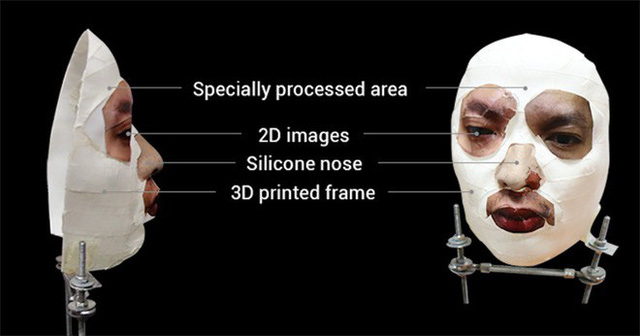 How did Bkav announce the details of the Face ID on the iPhone X? Picture 1
How did Bkav announce the details of the Face ID on the iPhone X? Picture 1
The special mask of BKAV deceives FaceID on iPhone X.
In 2008, Bkav was also the first company in the world to show that authentication using facial recognition technology is not enough security on laptops, right after technology companies like Toshiba and Lenovo , Asus . face recognition application on their products.
How has BKAV passed the FACE ID on iPhone X?
There are three issues that you need to know about BKAV 'hack "FaceID: firstly it is definitely unlocked by the mask that BKAV created, the second is whether they activated the' Note Request - Require Attention 'and finally, the information that we saw last week about the fact that FaceID could not distinguish the true and fake eyes was discovered right from November 4 by BKAV, ie one day after opening the sale.
So how did BKAV do that?
Things started not to start on November 3, the day of the launch of the iPhone X, which was far away, on September 12, the day iPhone X was introduced. According to BKAV's representative, they were followers from the beginning to the end, from the beginning they had seen potential problems in Face ID, they had planned to stall waiting for the phone. By November 4, the moment when BKAV had an iPhone X, they identified the first error: FaceID was easily deceived by fake eyes with paper. BKAV deceived FaceID by printing the fake eye right from the afternoon of the same day, even when activating Require Attention (required to look directly at the screen).
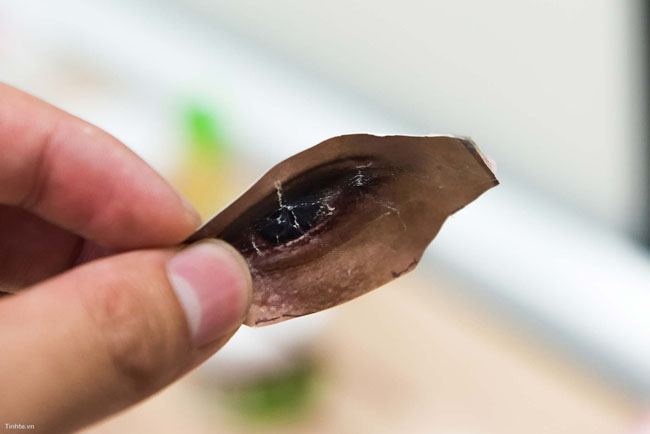 How did Bkav announce the details of the Face ID on the iPhone X? Picture 2
How did Bkav announce the details of the Face ID on the iPhone X? Picture 2
The eye is fake BKAV used to trick Face ID
Thanks to this error, BKAV has gradually discovered the operating principle of FaceID as it only works thanks to some facial components that do not require the whole to correctly identify. That's why some of you are identified by FaceID while lying on your side or half with your eyes closed. They started going in this direction and focused on some important components, the components that BKAV thought FaceID would scan before confirming the owner.
 How did Bkav announce the details of the Face ID on the iPhone X? Picture 3
How did Bkav announce the details of the Face ID on the iPhone X? Picture 3
To unlock it, BKAV had to use trial & error method, a method that will definitely work but takes a lot of time. Luckily, they have delineated the weaknesses from the beginning, so the time to 'unlock' FaceID will be shorter.
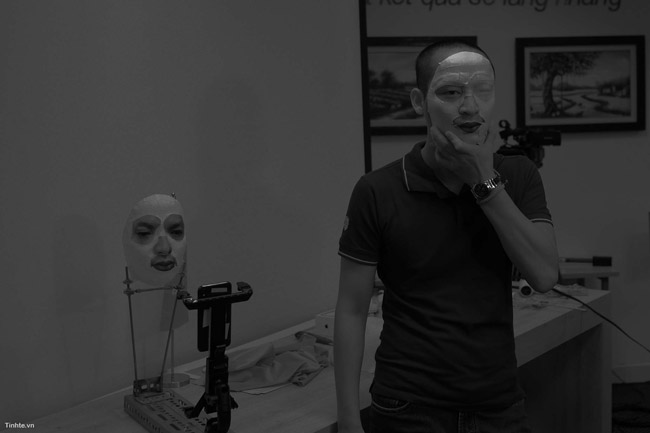 How did Bkav announce the details of the Face ID on the iPhone X? Picture 4
How did Bkav announce the details of the Face ID on the iPhone X? Picture 4
Just like every unit tried to fool the FaceID earlier, we first need to scan the face of the phone owner. BKAV uses a handheld camera to scan, it takes about 5 minutes but in fact, you can use a high-resolution camera to take lots of shots around the subject, then combine it with software to get tissue 3D images or even using phones with 3D scanning functions like Xperia XZ1. In addition, with dedicated 3D shooting systems, it will only take a few seconds to create a complete, ready-to-print 3D prototype.
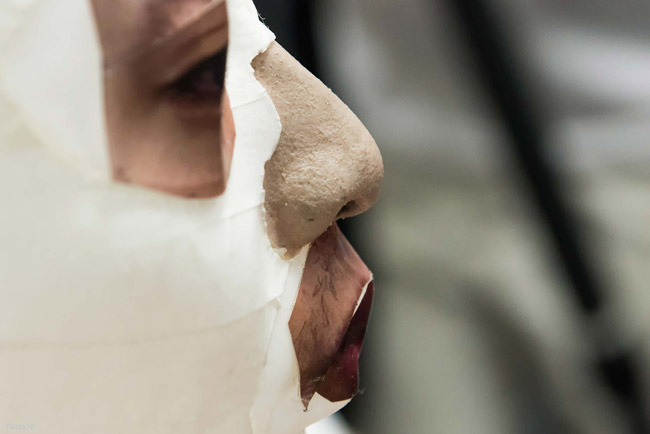 How did Bkav announce the details of the Face ID on the iPhone X? Picture 5
How did Bkav announce the details of the Face ID on the iPhone X? Picture 5
Next, create 3D prints. They try to use small, important components like ears, eyes, and nose to fool FaceID. There were 3 templates created, but all of them failed. In essence, artificial intelligence on FaceID is still machine learning, but machine learning depends very much on the data 'teacher' provides. Mr. Apple here provided FaceID with many models of models, masks and real people for it to learn the A11 Bionic chip, but I think perhaps the data that Apple provided is too 'clean', it is too professional. and clearly, like the model that Wired's or WSJ's brothers tested while the BKAV model was much simpler but much more strange than what FaceID knew.
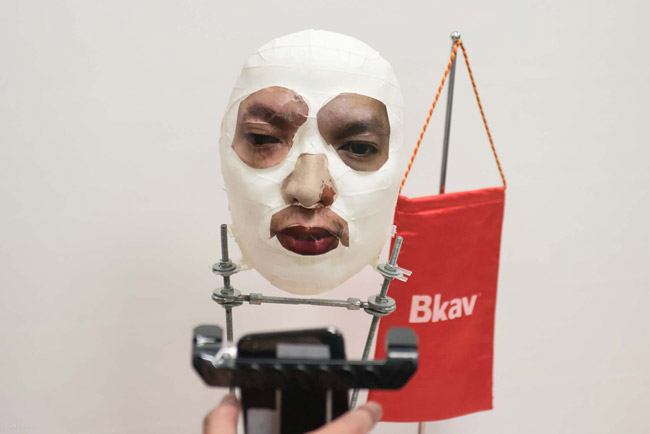 How did Bkav announce the details of the Face ID on the iPhone X? Picture 6
How did Bkav announce the details of the Face ID on the iPhone X? Picture 6
More details about this mask, eyes and mouth, beard are all made independently and posted on the 3D printed face model. I see BKAV has separated but this important area into small pieces, printed separately and paste the high detail image. This shows that what they can do is not only lucky but also calculated, unfortunately because of the avoidance of crooks, so it is impossible to share more carefully for themselves.
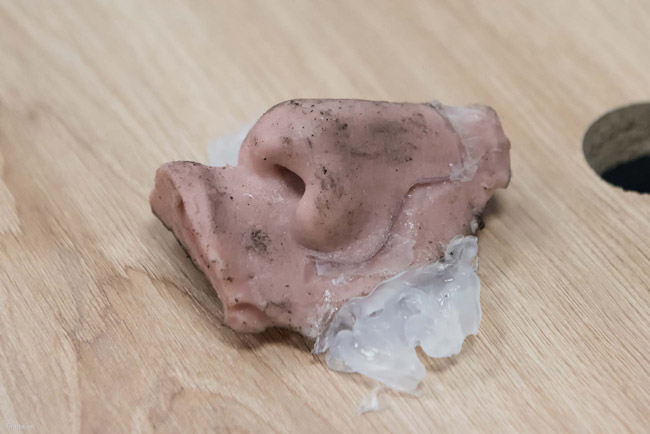 How did Bkav announce the details of the Face ID on the iPhone X? Picture 7
How did Bkav announce the details of the Face ID on the iPhone X? Picture 7
In the above components, the nose is the most important because it is made of silicon, made separately but not like the other parts. And if you pay close attention you will see that BKAV has used paper tape to paste the remaining components on the face, covering the lines from the 3D model, thereby deceiving FaceID this is not a model but a person. real. If using other materials, it is very smooth and unnatural, can be detected by FaceID but using paper scissors tape is very smart.
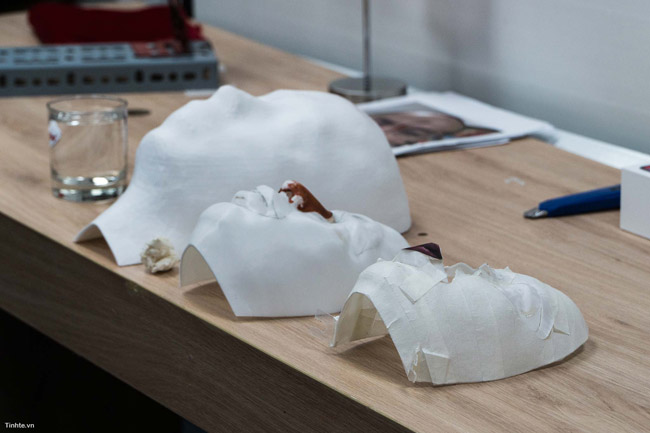 How did Bkav announce the details of the Face ID on the iPhone X? Picture 8
How did Bkav announce the details of the Face ID on the iPhone X? Picture 8
After they have finished making faces, they will let FaceID try to identify them, then slowly correct the elements on the mask until FaceID recognizes. There is a principle that BKAV says they adhere to very carefully the principle of not using passcode, not letting FaceID learn the changes. According to Apple regulations, after 5 times of wrong face recognition, iPhone X will require to enter the password, so after 4 times of trying the mask, the company will not use the real face to unlock the device, then try again, not for iPhone X has the opportunity to learn a mask and always recognize the real face.
They just try it, try it until the success is 3 am on November 9.
That's how BKAV unlocked the device, got some notes after trying it out:
- First: always turn on Require Attention.
- Try two: FaceID only receives mask at a fixed angle, you change it, it can no longer identify. This is understandable because the security nature of FaceID is still very good
- Tuesday, BKAV said that they only tried to show us that FaceID has potential vulnerabilities, as proof of concept, but the actual attack will be very difficult because it requires many different factors, including from master photography. come to prototyping and testing, lighting conditions. They have built a number of possible attack scenarios with FaceID but will not share them to the public but only share with the manufacturer to overcome.
- Fourth: when I try to use a completely new iPhone to learn the master's face and then scan the mask, it doesn't accept. BKAV said it will receive but they will have to recalibrate the mask or reconfigure the iPhone's angle accordingly. This is also understandable as mentioned above. According to BKAV, they initially took 3 days to create the final mask, successfully tested all but now only 8-9 hours is enough. Maybe later will be even shorter.
- On Thursday, I tried resetting FaceID, so that it scanned the model mask instead of scanning people. When this is done, the machine will receive the mask but will not accept the person. This indicates that the FaceID is wrong from the sampling operation, because it should not allow masking. In fact, this does not affect the use, because no one is going to get a mask to be a model, just try it.
- Finally, for your question about whether BKAV offers iPhone X masks to deceive people, I think not. Because when I try to learn masks, iPhone X will unlock at many different angles, while their test version will only get in one position.
In the end, it can be seen that BKAV has proven they are not "explosive" in this Face ID hack. Maybe AI will be smarter, will know how BKAV has tricked it to avoid it and then the methods of attack will be more sophisticated and AI will be able to get over again. But we should be proud because of what BKAV did, right?
The article refers to: https://tinhte.vn/threads/video-face-id-da-bi-bkav-lua-mo-khoa-nhu-the-nao.2744230/ and Bphone group of BKAV.
You should read it
- BKAV confirms that Face ID on iPhone X is not safe enough, with video proof
- How to reset Face ID on iPhone X
- Vice President BKAV quit his job
- Bkav 2014 software launched soon with Anti Leak technology
- Bkis is about to stop providing Bkav Home
- 4 ways to improve Face ID stability
- What is Face ID? How to use it?
- What's the highlight of Bkav's super light, super-fast web browser?
- How to set Face ID on iPhone X
- How does Apple's Face ID work?
- In early 2011, BKAV SE will be released
- What you need to do to unlock Face ID even when wearing a mask
May be interested

Firefox 57 Quantum is here, great Mozilla!

Which Windows Phone? Microsoft is selling Android phones!

Apple's latest deal will help iPhone take photos with less light

Facebook cooperates to improve the quality of streaming video

Bill Gates is building his own city

Bitcoin increased again, surpassing the 7,000 mark






 BKAV confirms that Face ID on iPhone X is not safe enough, with video proof
BKAV confirms that Face ID on iPhone X is not safe enough, with video proof How to reset Face ID on iPhone X
How to reset Face ID on iPhone X How to set Face ID on iPhone X
How to set Face ID on iPhone X 4 ways to improve Face ID stability
4 ways to improve Face ID stability What is Face ID? How to use it?
What is Face ID? How to use it? Vice President BKAV quit his job
Vice President BKAV quit his job